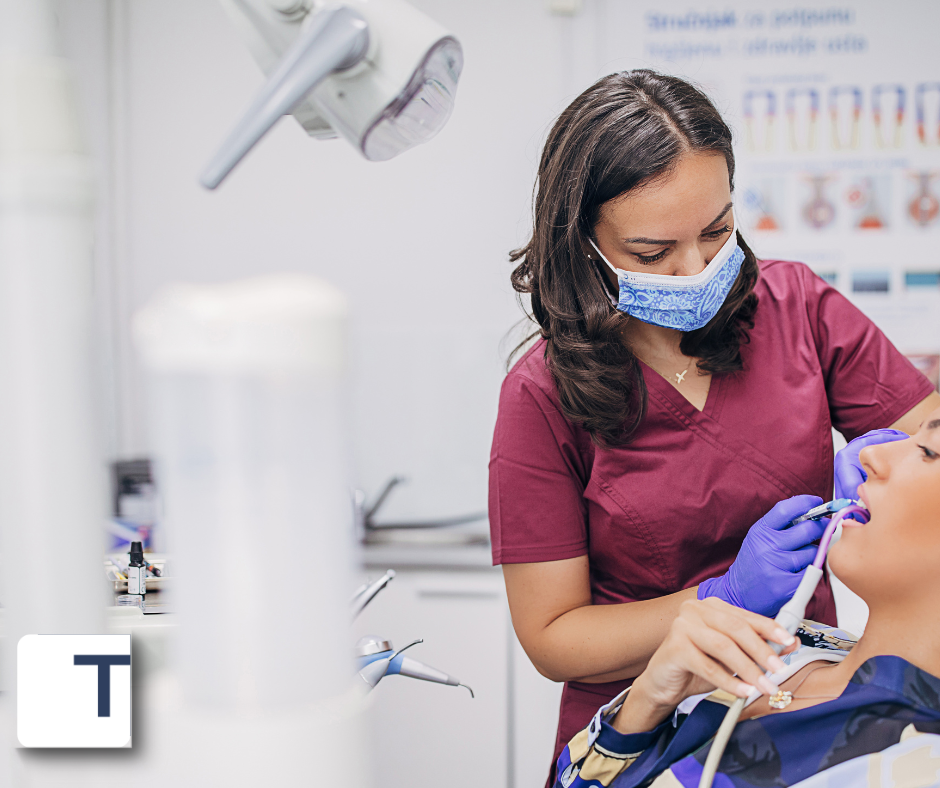Periodontal disease affects millions of Americans, with estimates suggesting that nearly 47% of adults over the age of 30 have some form of gum disease. Thousands experience localized periodontal issues, where only 1-3 teeth require treatment.
For many years, treating periodontal disease by quadrants has been the standard however, many patients present with localized gum disease that, if left untreated, can lead to further complications. Early intervention in these cases is critical—not only for halting the progression of gum disease but also for preventing its potential links to systemic health conditions, such as cardiovascular disease, diabetes, heart attack, stroke, and even Alzheimer’s and Parkinson’s Disease.
Research continues to support the connection between oral health and total health. Prevention of periodontal disease will reduce the risk of more serious health problems as a person ages.1
In part one of this two-part series about treating periodontal disease, we look at Phase 1, which includes a visual exam, a comprehensive periodontal exam, radiographs, disease diagnosis, initial scaling, soft-tissue diode laser use, and a re-evaluation process.
Routine Maintenance includes re-evaluating the disease process, updating the patient’s total health, a visual exam, and a spot probe. When the disease process is active, a new comprehensive periodontal exam will be required in some situations. It will also include removing light to moderate calculus sub and supra-gingival calculus polish, laser bacterial reduction, patient education, and a customized re-evaluation and routine care follow-up plan.
Phase 1
Initial Treatment Planning
The first step when treating periodontitis is to complete a Comprehensive Periodontal Evaluation (CPE), assessing every tooth to determine clinical attachment loss, and a current full mouth radiographic series to consider the severity of the disease.2
When treating generalized chronic moderate to severe gingivitis, periodontal disease, which affects only 1-3 teeth in the same quadrant, the treatment plan will be customized, and a sequence of appointments followed by a four-to-six-week re-evaluation with a plan for routine maintenance is a part of this initial treatment plan.
For many patients, periodontal disease may be localized to only 1-3 teeth, while other patients may exhibit chronic, generalized moderate to advanced periodontitis. The treatment plan for periodontitis should individually address each patient’s disease status and prepare a customized plan to halt the progression of oral and systemic disease. Patient-specific factors such as oral hygiene habits, occlusion, patient medical history, and risk factors (Examples: tobacco use, including vape use, diabetes, high blood pressure, etc.) should be considered when designing the treatment plan.
Non-Surgical Treatment Options
The cornerstone of non-surgical treatment for localized periodontal disease is scaling and root planing (SRP), which targets the removal of plaque and calculus below the gumline. SRP is effective in controlling mild to moderate cases of periodontitis disease. This gum therapy allows the gums to heal, and the periodontal fibers have a chance to reattach, reducing pocket depths while also preventing oral and systemic disease.
Antimicrobial Treatments
Antimicrobial treatments can also be applied directly to the affected areas during or after SRP. Localized delivery of antibiotics or antimicrobials and/or the use of a soft tissue diode laser will reduce the bacterial load in periodontal pockets, promoting faster healing and preventing recurrence. These adjuncts also slow the progression of systemic diseases.2 What happens in the body can eventually lead to various systemic diseases.
Soft-tissue Diode Laser Use
When treating gingivitis and periodontitis, soft-tissue diode lasers will enhance treatment outcomes. Soft-tissue diode laser effectively targets and removes inflamed gum tissue and harmful bacteria in the inflamed, periodontally affected pockets while minimizing discomfort and promoting faster healing.
When used for patients with gingivitis (Laser Bacterial Reduction: LBR), the diode laser is used at a lower setting to decontaminate the gingival sulcus, reducing inflammation and encouraging tissue regeneration. In periodontitis cases, the diode laser is set differently and will reach deeper into pockets to promote the reattachment of gums to the tooth surface, reducing pocket depths.
A soft-tissue diode laser and LED light induce a photobiomodulation (PBM) effect, which accelerates healing, as it increases cell viability by stimulating the mitochondrial and cell membrane photoreceptors synthesis of ATP. 3, 4
When treating periodontal disease, once Phase I initial treatment is completed, when do you schedule your patient to return for maintenance? Join us next month as we share part two. In part II of Treating Periodontal Disease: A Paradigm Shift, we’ll discuss the maintenance phase when treating patients with chronic localized and generalized periodontal disease.
References:
1.The Links between Cardiovascular Diseases and Alzheimer’s Disease. PMID: 32727331
2. AAP Complete List of What’s Included in CPE. List Included Here
3. Effectiveness of a diode laser in addition to non-surgical periodontal therapy: study of intervention. PMID: 26161248
4. Photobiomodulation—Underlying Mechanism and Clinical Applications. Dompe C, Moncrieff L, Matys J, Grzech-Leśniak K, Kocherova I, Bryja A, Bruska M, Dominiak M, Mozdziak P, Skiba THI, Shibli JA, Angelova Volponi A, Kempisty B, Dyszkiewicz-Konwińska M. Photobiomodulation-Underlying Mechanism and Clinical Applications. J Clin Med. 2020 Jun 3;9(6):1724. doi: 10.3390/jcm9061724. PMID: 32503238; PMCID: PMC7356229.

Debbie Seidel-Bittke, RDH, BS is the founder of Dental Practice Solutions and a clinical dental hygienist with years of experience. As a hygiene department coach and speaker at national and state dental conferences, she specializes in helping practices implement effective systems, optimizing the hygiene department with a team-based approach to elevate patient care. As a former assistant professor at USC School of Dentistry and hygiene department program director, Debbie is committed to improving hygiene departments and patient outcomes.
You can reach Debbie by email at debbie@dentalpracticesolutions.com, by phone at 623-252-1941.

